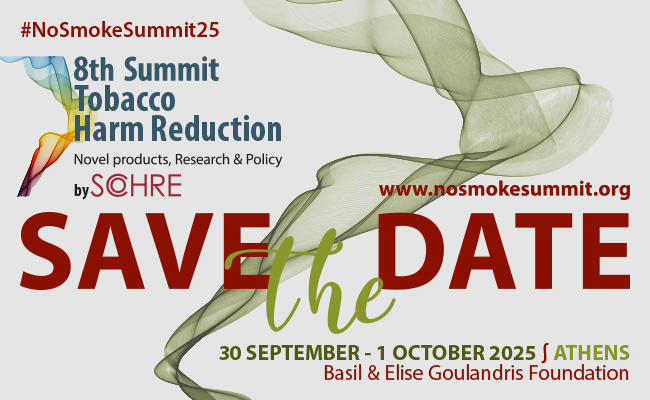Dr. Konstantinos Farsalinos, a prominent advocate for flavours in Tobacco Harm Reduction (THR) and vaping products in particular, in his keynote speech talked about the role of flavors in tobacco harm reduction, particularly focusing on flavored vaping products and their alleged influence on youth vaping in the U.S. He presented data from the National Youth Tobacco Survey to challenge the narrative of a “vaping epidemic” and the idea that flavored products serve as a gateway to smoking among adolescents, demonstrating no significant correlation between flavored vaping and increased smoking rates among middle and high school students. Dr. Farsalinos further supported his argument with findings from a systematic review of 104 studies, highlighting that flavors are essential in encouraging adult smokers to transition from traditional cigarettes.
He advocated for regulatory measures that prioritize the protection of both youth and adult smokers, suggesting that control over packaging and labelling would be more effective than restricting flavor availability. Additionally, he addressed safety concerns regarding flavors, noting that most are food-approved and have been safely used for over a decade. The discussion emphasized the complexity of flavor regulation in e-cigarettes, urging a balanced consideration of their benefits and risks.
Following a brief introduction by the session’s chair, Prof. Anastasia Barbouni, Dr Farsalinos set the topic of his speech. The case of flavours in tobacco harm reduction is a very controversial topic, he said, as are electronic cigarettes, but also all harm reduction products. We are seeing strong and opposing views in the scientific community, but also among the regulators and within the society about the prospective impact of e-cigarettes and all other products on smoking rates and on public health. About flavours in particular, many express concerns about the youth use and effects of flavoured smoking products, mainly electronic cigarettes.
Youth vaping rates and trends
He presented data on youth vaping in the U.S. where the authorities, the CDC and the FDA talked about a vaping epidemic, that led to a lot of debate. However, this is not exact. Published data from the National Youth Tobacco Survey, in 2017 and 2018, showed that among adolescents who have never smoked, the vast majority were not currently cigarette users; among those who smoked, there was only infrequent use, which according to the definition of the survey, meant use of less than 20 cigarettes over the past 30 days. Frequent use was around 1% in 2018, which included 0.5% daily use. The speaker noted that today, the use of e-cigarettes among youth is lower than at that time. It peaked at around 2019, and then it started weaning off.
Τhe idea that vaping—and particularly flavoured vaping products—represent a gateway to smoking for youth, said Dr Farsalinos, has been largely rejected by the data (official data from CDC). In 2011, when electronic cigarettes were not widely available and the popularity was not at the level that it is today, smoking rates among middle school students were 4.3% and among high school students in the US, 15.9%. There is also a dramatic decline in smoking rates.
In 2023, latest data are showing basically that the next generation of Americans is going to be a smoke-free generation. The smoking rates show that smoking has been almost eliminated at 1.1% in middle school students and 1.9% in high school students, almost 10 times lower compared to 12 years ago.
Also, when we look at general long-term trends, there has been an increase in the rate of decline of smoking starting at around 2010, when electronic cigarettes started appearing in the market and growing in popularity. This is another kind of evidence showing that the gateway to smoking effects is rather not valid and not applicable in this case.
Why Do Flavours Exist?
Dr Farsalinos commented that everyone’s talking about flavours that attract youth, and then focussed on two questions, whether flavours are appealing to adults and why do flavours exist. A systematic review of 104 studies published two years ago, identified that there are two main factors associated with the attractiveness of electronic cigarettes for smoking adults: namely, higher nicotine concentrations and access to a variety of flavours. A comment the authors made was that these two factors are likely to be associated with higher abuse potential and appeal for electronic cigarettes for adult current and former smokers, Dr Farsalinos noted. He commented that contrary to what someone might think, this is not concerning. “It is exactly what smokers need. Smokers need an alternative product that is appealing, that is attractive, which means that they like to use it.” The speaker emphasized that, if we want people to substitute for smoking, we need products that are appealing and that have high abuse potential. So, the authors of the review concluded that higher nicotine concentrations and the availability of a variety of flavours in e-cigarettes might facilitate complete substitution for cigarettes. For this reason, they raised the issue of regulations that need to take into consideration their impact on smokers. And we know that today, most regulations are oriented towards flavour restrictions, Dr Farsalinos concluded.
Penetration of Vaping in Youth
To a question from the audience, about the penetration of vaping in youth, and especially of flavours like candies and sweets, tropical fruit, that seem to target kids mainly in not adults Dr Farsalinos said that all humans, independent of age, like sweet flavours. He pointed out that the problem in his opinion is not the availability and variability of flavours. It is a problem of labelling and packaging. Especially in the US, he said, some products are packaged and labelled in a way that could be appealing to adolescents. Regulators can intervene in creating regulations, not to restrict the availability of flavours, but to control packaging and labeling. Referring to the example of Juul, a brand whose packaging isn’t “fancy”, yet was very popular in the US, Dr Farsalinos said that even the issue of packaging and labelling is not the main culprit for adolescent use.
We need to be realistic, he concluded, and understand that we will never be able to achieve absolutely zero use among adolescents. At the same time, however, we should look at smoking rates during that time of growing popularity of e-cigarettes: smoking has been eliminated among American youth in the last 10 or 12 years. “The fact that the next generation of Americans is going to be a smoke-free generation is amazing from a public health perspective, and not many people comment on that,” he said. We have to look also at the positive aspects and prospects of these products and not blindly regulate only due to and because of the unintended consequences. There are ways of creating a more balanced regulation that will protect youth and at the same time protect adults, smokers, current and former smokers.
About Flavours Safety and Regulation
To the question if the flavours are safe via inhalation, since they are approved for the food market, when absorbed via gastrointestinal route and not via lungs, Dr Farsalinos said that the audience is right that they are not approved for inhalation, but at the same time, it’s the best option we have using food approved flavours. For most of them, we don’t have any reasonable expectations of harm and concern. He pointed out that food flavours have been available in the for 15 years now, since the beginning of e-cigarette products. Concerns were raised regarding some compounds, as for diacetylene acetylpropanol, which are food approved compounds, mostly now eliminated by manufacturers. Concerns will be there, Dr Farsalinos said, because these products have been available for 15 years and it is impossible to know everything in such a short period of time. At the same time, he suggested that we should create balanced regulation. These products are used because of the variability of different flavours and the ability of people to choose. Banning the flavours will have no impact because if someone wants to find flavours, they can find it either in the black market or in the legal market among food flavouring products.
Asked if food flavours might disappear after a ban, Dr Farsalinos stated that it is impossible. No compound in e-cigarette was created or invented specifically to be used in electronic cigarettes, he pointed out. All the ingredients available in e-cigarette products come from different industries, mostly from the food industry, but also pharma industry, cosmetic industry. For example, glycerol was approved for use in food, pharmaceutical and cosmetics in 1959; propylene glycol in 1982. Flavourings have been available in the food industry for decades. So, these products can’t be eliminated from the market, and it is almost impossible to enforce any such regulation.



